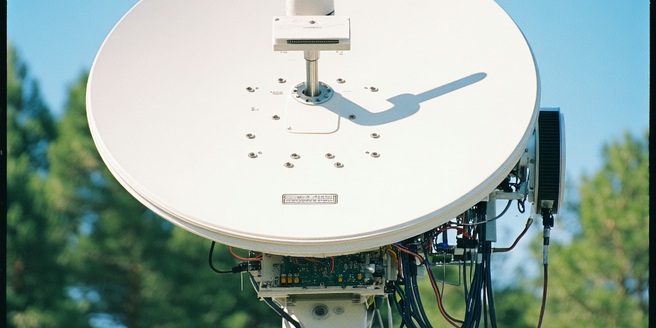
Essential Equipment and Tools Needed for Your DIY Radar Station
Building a DIY radar station requires several key components and tools. First, you need a reliable radar transmitter and receiver, which are the heart of the system. Antennas, both for transmission and reception, are crucial as well, and you’ll want to ensure they are compatible with your radar’s frequency. A sturdy support structure for mounting your antennas is necessary to maintain stability and accuracy. Additionally, a high-quality computer with appropriate radar processing software is essential for data analysis. Don’t forget about cables for connecting components, a power supply robust enough to handle your setup, and weather-resistant enclosures to protect your equipment. Lastly, standard tools like screwdrivers, wrenches, and pliers are indispensable for assembling and adjusting your system. These components and tools form the backbone of an effective DIY radar station.
Step-by-Step Guide to Assembling Your Radar System
Begin by setting up your radar’s support structure to ensure stability. Mount the antennas securely, following the manufacturer’s guidelines. Next, connect the radar transmitter and receiver to the antennas using compatible cables. It’s crucial to verify that all connections are snug and weatherproof. Install the radar processing software on your computer, and carefully link the computer to the radar system via the designated interface cables. Power on the system, ensuring the power supply is adequate and that all components are functioning. Running initial checks on connectivity and software configuration is essential to ensure smooth operation. Follow up by setting up data logs to monitor the radar’s performance. Each assembly step should be followed strictly to avoid issues and ensure optimal functionality of your DIY radar station.
Calibrating and Testing Your Radar for Optimal Performance
Calibration is an indispensable step in maximizing your radar’s efficiency and accuracy. Begin by setting a baseline in a controlled environment, away from interference. Using the radar’s software, access diagnostic tools to fine-tune the transmitter and receiver settings. Adjust the antennas’ orientation and angle to optimize signal strength and clarity. It’s crucial to test various distance and speed scenarios, simulating conditions your radar will encounter. Document results meticulously during each test to identify patterns or anomalies. Regularly review and recalibrate your system to account for environmental changes or component wear. A well-calibrated radar system not only ensures data accuracy but also prolongs the equipment’s life. Adhering to these calibration practices guarantees that your DIY radar provides reliable and precise readings.
Understanding and Interpreting Radar Data Effectively
Interpreting radar data requires a solid understanding of its basic principles and patterns. Begin with familiarizing yourself with the radar’s software interface, focusing on key data outputs such as range, velocity, and bearing. Understanding signal reflections and radar cross-sections is vital to accurately interpret the data. Practice with sample datasets to hone your skills in identifying common patterns and anomalies. Using visualization tools can aid in comprehending complex data; graphs and charts help illustrate trends and deviations in readings. Regularly review documentation and tutorials related to your specific radar system to stay updated on best practices. Effective data interpretation transforms raw radar returns into valuable information, crucial for informed decision-making in real-world applications.
Troubleshooting Common Issues in DIY Radar Stations
Encountering issues with your DIY radar station can be frustrating, but systematic troubleshooting will guide you to solutions. Start by checking all physical connections and power supplies; loose cables or weak power sources are common culprits. If the radar system isn’t operating correctly, verify software settings and ensure they align with your hardware specifications. Calibration discrepancies might cause inaccurate readings; recalibrate if necessary. Observe signal quality and noise levels to identify potential environmental interference. Keeping detailed logs of system performance can highlight recurring problems and aid in diagnosing issues promptly. Regular maintenance, such as firmware updates and physical inspections, can prevent frequent malfunctions. By approaching troubleshooting methodically, you can efficiently resolve problems and maintain your radar station’s operational integrity.
